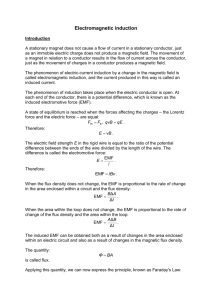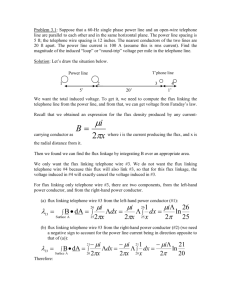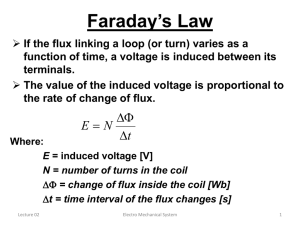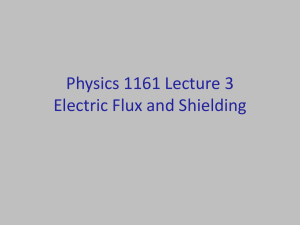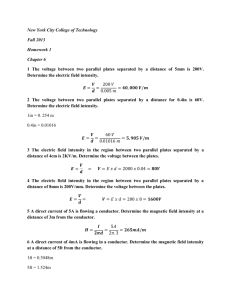Document
advertisement
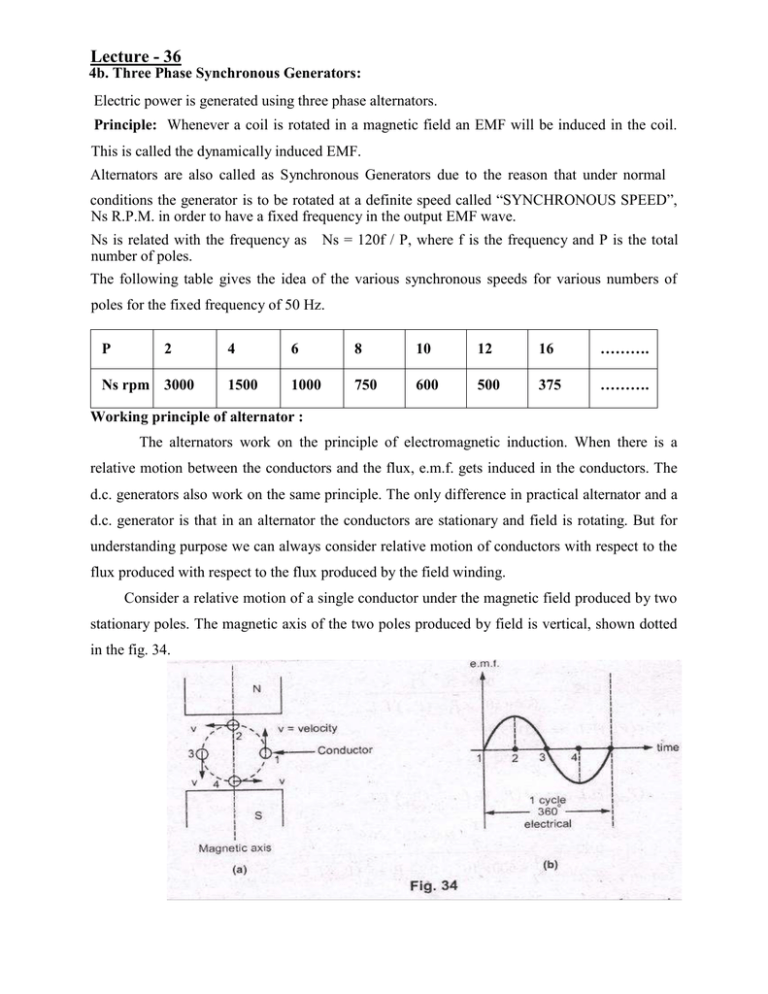
Lecture - 36 4b. Three Phase Synchronous Generators: Electric power is generated using three phase alternators. Principle: Whenever a coil is rotated in a magnetic field an EMF will be induced in the coil. This is called the dynamically induced EMF. Alternators are also called as Synchronous Generators due to the reason that under normal conditions the generator is to be rotated at a definite speed called “SYNCHRONOUS SPEED”, Ns R.P.M. in order to have a fixed frequency in the output EMF wave. Ns is related with the frequency as Ns = 120f / P, where f is the frequency and P is the total number of poles. The following table gives the idea of the various synchronous speeds for various numbers of poles for the fixed frequency of 50 Hz. P 2 Ns rpm 3000 4 6 8 10 12 16 ………. 1500 1000 750 600 500 375 ………. Working principle of alternator : The alternators work on the principle of electromagnetic induction. When there is a relative motion between the conductors and the flux, e.m.f. gets induced in the conductors. The d.c. generators also work on the same principle. The only difference in practical alternator and a d.c. generator is that in an alternator the conductors are stationary and field is rotating. But for understanding purpose we can always consider relative motion of conductors with respect to the flux produced with respect to the flux produced by the field winding. Consider a relative motion of a single conductor under the magnetic field produced by two stationary poles. The magnetic axis of the two poles produced by field is vertical, shown dotted in the fig. 34. Let the conductor starts rotating from position 1. At this instant, the entire velocity component is parallel to the flux lines. Hence there is no cutting of flux lines by the conductor. So at this instant is zero and hence induced e.m.f. in the conductor is also zero. As the conductor moves from position 1 to position 2, the part of the velocity component becomes perpendicular to the flux lines and proportional to that e.m.f. increases as the conductor moves from position 1 towards 2. At position 2, the entire velocity component is perpendicular to the flux lines. Hence there exists maximum cutting of the flux lines. And at this instant, the induced e.m.f. in the conductor is at its maximum. As the position of the conductor changes from 2 towards 3, the velocity component perpendicular to the flux starts decreasing and hence induced e.m.f. magnitude also starts decreasing. At position 3, again the entire velocity component is parallel to the flux lines and hence at this instant induced e.m.f. in the conductor is zero. As the conductor moves from position 3 towards 4, the velocity component perpendicular to the flux lines again starts increasing. But the direction of velocity component now is opposite to the direction of velocity component existing during the movement of the conductor from position 1 to 2. Hence induced e.m.f. in the conductor increases but in the opposite direction. At the position 4, it achieves maxima in the opposite direction, as the entire velocity component becomes perpendicular to the flux lines. Again from position 4 to 1, induced e.m.f. decreases and finally at position 1,again becomes zero. This cycle continues as conductor rotates at a certain speed. So if we plot the magnitudes of the induced e.m.f. against the time, we get alternating nature of the induced e.m.f. as shown in the fig. 34 (b).This is the working principle of an alternator.
